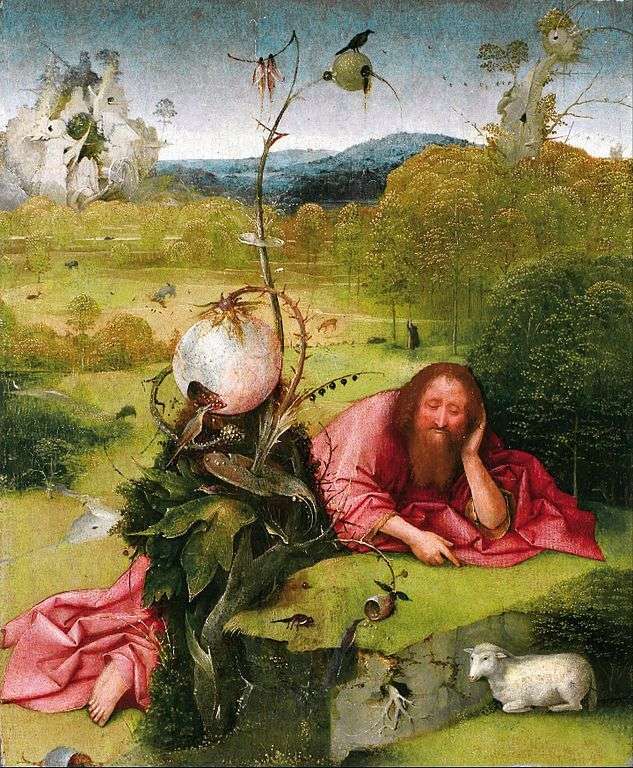
In the midst of the enchantingly poetic, light-filled landscape, the holy prophet John is depicted as deepening in religious reflections. This clash of two realities – the “mountain” and the “dolnego” – represents another version of the theme that has become typical of Bosch’s work, the victory of the spiritual beginning over the sinful temptations of the world.
On the compositional decision of the picture, the picture of Gertgen that Sint Jansa, written by several years earlier, depicts a prophet, staring in deep meditation with an unseeing glance into the space. In Bosch, he points to the Lamb of God, pictured in the lower right corner. This gesture traditionally recognizes John the forerunner of Christ, but in this case it also denotes a spiritual alternative to the carnal beginning embodied in succulent fleshy fruits that heave alongside on gracefully curved stems, and in equally eloquent plants in the background.
In the foreground is a strange curved plant with wide leaves and huge spines – it seems, it has grown here specifically to distract the hermit from pious reflections. The suspicious fruits of this fantastic bush are symbols of earthly temptations. The trunk, studded with thorns, resembles a thistle, recalls the original sin: having made its first choice – having eaten the fruit of the tree of knowledge, – the ancestors, and with them the whole human race, lost the earthly paradise. But in the context of the theme of temptations, this fabulous plant can also be interpreted as the image of a vision sent by the devil to John the Baptist who retired to the wilderness.
Birds of different breeds are fed by huge forest berries: both feathered and overgrown plants correspond to flora and fauna in the triptych “Garden of Earthly Delights”. Other thematic analogies also speak about the thematic and chronological connection of these works, for example, the bizarre shape of the cliff of the background.
The solid green wall of the vegetation on the right is contrasted with respect both to the fantastic plant on the left, and to the bizarre, unreal cliffs of the distant plan. The tree crowns, carefully marked with evenly dotted whitish strokes, imitating the play of sunlight on lush greenery, are closer to painting by Giorgione rather than by such northern masters as Albrecht Altdorfer, whose landscapes are saturated with the dynamics of the wildly growing plant world.
